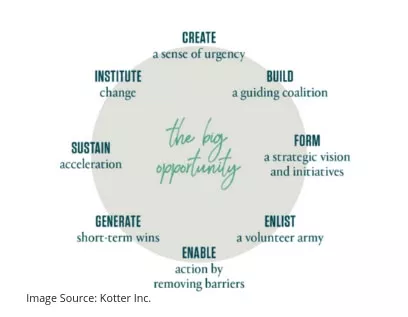The pace of change in the modern workplace is accelerating all the time.
As you look for new digital tools to refine your strategy and boost business performance, adaptability and agility have emerged as key organizational traits.
But the rate at which companies are implementing new tools is often too fast for employees to keep up. They simply can’t learn new tech quickly enough.
Without a high level of usability, your software investment will flop, employee performance will suffer, and your bottom line will dip.
If you are building up your tech arsenal, you need your employees to be adaptable. They must be able to quickly adopt and gain proficiency with new tools. They need to achieve digital adoption.
What is digital adoption?
Digital adoption is achieving a state in which digital tools are being used as intended, and to their fullest extent.
But it’s about more than just basic usability. Total digital adoption is when that particular technology becomes second nature to its user.
Why digital adoption is critical to performance
Step into your employees’ shoes.
The modern employee uses an average of 9.39 apps per day, according to a survey by harmon.ie. Seventy-four percent of respondents have more than five apps open at once. In a large organization, the variety of apps could be even greater.
The so-called “Third Industrial Revolution” has spawned software for every function.
Tracking time, managing projects, communicating, managing the sales process, the marketing process, accounting, talent management — the list goes on.
In many cases, growth in the use of enterprise software has actually become counterproductive. While employees struggle to navigate apps to perform their tasks, productivity suffers.
We’re living in an age of app overwhelm.
Digital adoption has become central to employee performance. Employees that aren’t using apps as intended, and to the fullest extent, are falling behind. They’re less productive, more frustrated, and not fulfilling their potential.
In basic terms, they’re costing the business money.
Even an employee with the most outstanding skillset is only as good as their adoption of the digital tools you provide them.
4 digital adoption mistakes that threaten employee performance
Digital adoption mistakes can destroy employee performance and threaten to derail an organization’s digital transformation. These are some of the most common.
1. No digital adoption solution
Traditional training methods have proved woefully inadequate for digital tools. Alternatively, digital adoption tools use contextual learning to assess in real-time what a user is doing, anticipate where they will encounter friction, and proactively send guidance.
Think of a digital adoption solution as GPS for your enterprise software. When your employees always know where to go, they will be able to perform any task and do their jobs effectively.
That means there’s no time lost calling Support, attending training sessions, or grappling with the “forgetting curve” trying to navigate the platform from memory.
Achieve digital adoption and boost employee performance with WalkMe’s Digital Adoption Platform (DAP). Request a demo today.
2. Poor implementation process
As with anything, your digital adoption implementation needs a strategy to guide it. But too many enterprises rush into implementation without preparing for and planning execution.
Remember that implementation is only half the digital adoption equation. The technical side, if you like. Don’t neglect the people side of the equation. Have a strategy in place to address user onboarding and adoption.
Prosci’s ADKAR model and Kotter’s 8-step process for organizational change are good places to start.
3. Inadequate vendor support
When a new digital tool is being implemented, it’s really important that the vendor of that technology provides enough support.
The vendor’s customer success team should be available during implementation and beyond to answer any questions, address problems, and facilitate the adoption process in any way they can.
If the vendor you selected isn’t providing the right support, your employee performance will suffer. They will struggle with usability, and likely look for roundabout solutions, like doing tasks manually or using the old software.
Next on your reading list: 5 Digital Adoption Tips to Reduce Software Training Overload
4. Lack of communication
Lack of communication is one of the most overlooked digital adoption mistakes. It’s central to any change initiative. In fact, it’s highlighted as a key component of pretty much all organizational change management models.
Communicating the need for digital change, its benefits, the vision and strategy behind it, to employees and other stakeholders is critical.
Without clear, engaging, and consistent communication, organizations run the risk of losing users to old habits and poor morale.
__________
WalkMe’s Digital Adoption Platform (DAP) transforms the user experience in today’s overwhelming digital world. Using artificial intelligence, engagement, guidance, and automation, WalkMe’s transparent overlay assists users to complete tasks easily within any enterprise software, mobile application or website. Discover how a DAP can revolutionize your business — request a demo today.


